In the interconnected world of insurance, there are many challenges associated with marketing. The industry has experienced substantial change over the past two decades, especially with the rise of internet insurance companies. Competition between traditional insurers and internet start-ups is only complicated by the conservative nature of the insurance industry as a whole. Insurance marketing has evolved dramatically during the same period, with vast differences in how insurance is marketed to consumers, agencies, and brokerages. In this guide, we will explore best practices for marketing for insurance agents, including strategies and tips to maximize return on investment for insurance marketing budgets.
Table of Contents
The Anatomy of the Insurance Industry
Before delving into specifics of insurance marketing for agents, it can be valuable to gain an understanding of the insurance industry at large. For marketing purposes, the insurance industry is a tiered model consisting of four primary groups:
- Lead Generation
- Insurance Agencies/Insurance Brokerages
- Managing General Agencies (MGAs)
- Insurance Carriers
The important distinction between these groups is how much control each group has over the typical insurance transaction. The lead generation group is the start of the sales funnel, directing leads to third-parties like traditional brick-and-mortar or online insurance agencies.
Agencies, in turn, work with MGAS and carriers, but they are also the consumer-facing part of the industry. Agencies sell policies and products directly to consumers, and may exist as small single-location companies or regionally-based networks of insurance firms. Brokerages, on the other hand, typically deliver specialized insurance services and products to retail agents and/or brokers. MGAs often have underwriting authority, allowing them to select the risks and parties with which they will work. This group usually works with specialized risks and insurance products tailored to those risks. MGAs sometimes perform the role of a carrier as well, including managing claims or other functions associated with large insurance firms.
Finally, insurance carriers are the entities that develop insurance products and services, then sell those products and services to agencies, brokerages, MGAs, and consumers alike. Their needs for insurance marketing may differ vastly from the other groups, as marketing initiatives may need to be tailored for each distinct audience within the industry.
Keying in on Agents: Insurance Marketing Strategies
On the consumer side of insurance marketing, more and more use of digital marketing strategies, including web content and social media platforms, have proven effective. While insurance marketing to agents and brokers often uses these same tools, the emphasis is on more traditional outreach practices. Industry professionals know that agencies tend to be more conservative in terms of the approaches that work to build a business. To this end, there are five important strategies to incorporate into marketing efforts for agents:
- Agents are bombarded by daily communications. A key strategy is to make insurance marketing materials stand out from the competition by including promotions, rich detail, and engaging language.
- Know your audience thoroughly. Many agencies specialize in particular forms or classes of insurance, so marketing materials must be tailored to the unique interests of a given agency’s work.
- Personalize the insurance marketing experience by illustrating specifically how your products or services can advance the agency’s business goals.
- Convey your message quickly and efficiently by getting right to the point: sharing how a partnership will benefit the agency’s business and your own.
- Follow up with emails or phone calls; this technique alone has been shown to drive business growth, as many agencies are receptive to personalized attention.
It is a great idea to leverage the power of industry publications, both in print and on the Web. Advertising that incorporates these resources can reach a broader audience, and can greatly improve cost-per-impression efficiencies. Finally, direct mail and email campaigns can support the outreach efforts of insurance marketing by targeting specific audiences, such as specialty insurance service providers.
A Changing Insurance Landscape: Connecting with Agents
As internet-based insurance companies have risen to the forefront of recent industry developments, traditional insurance agencies face new challenges. Agents fear the loss of clients to internet insurance firms, and as a counter to this fear, many wish to ramp up their efforts in reaching new customers. Insurance marketing is designed to facilitate that acquisition process. When preparing marketing efforts for agents, it is crucial that you reinforce their value – a personalized value that internet insurers simply cannot provide. Agencies deliver services that are unavailable to internet-only customers, helping to provide a strategic advantage on the local or regional levels. Insurance marketing to agencies must incorporate that advantage by illustrating how working with an MGA or brokerage can advance business interests. Agents are the lifeblood of the insurance industry; it is high time that marketing reflects their importance in the changing insurance landscape.
About Neilson Marketing Services
Since 1988, Neilson Marketing Services has been implementing innovative marketing solutions and strategies for our clients in all areas of marketing. Contact us today at (866) 816-1849 to put our talent, expertise, and vast resources to work for you. Let’s make things happen, together!
